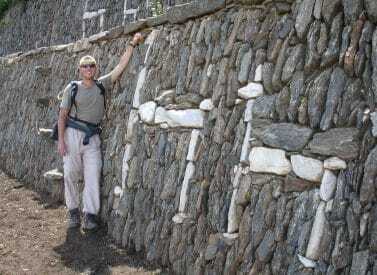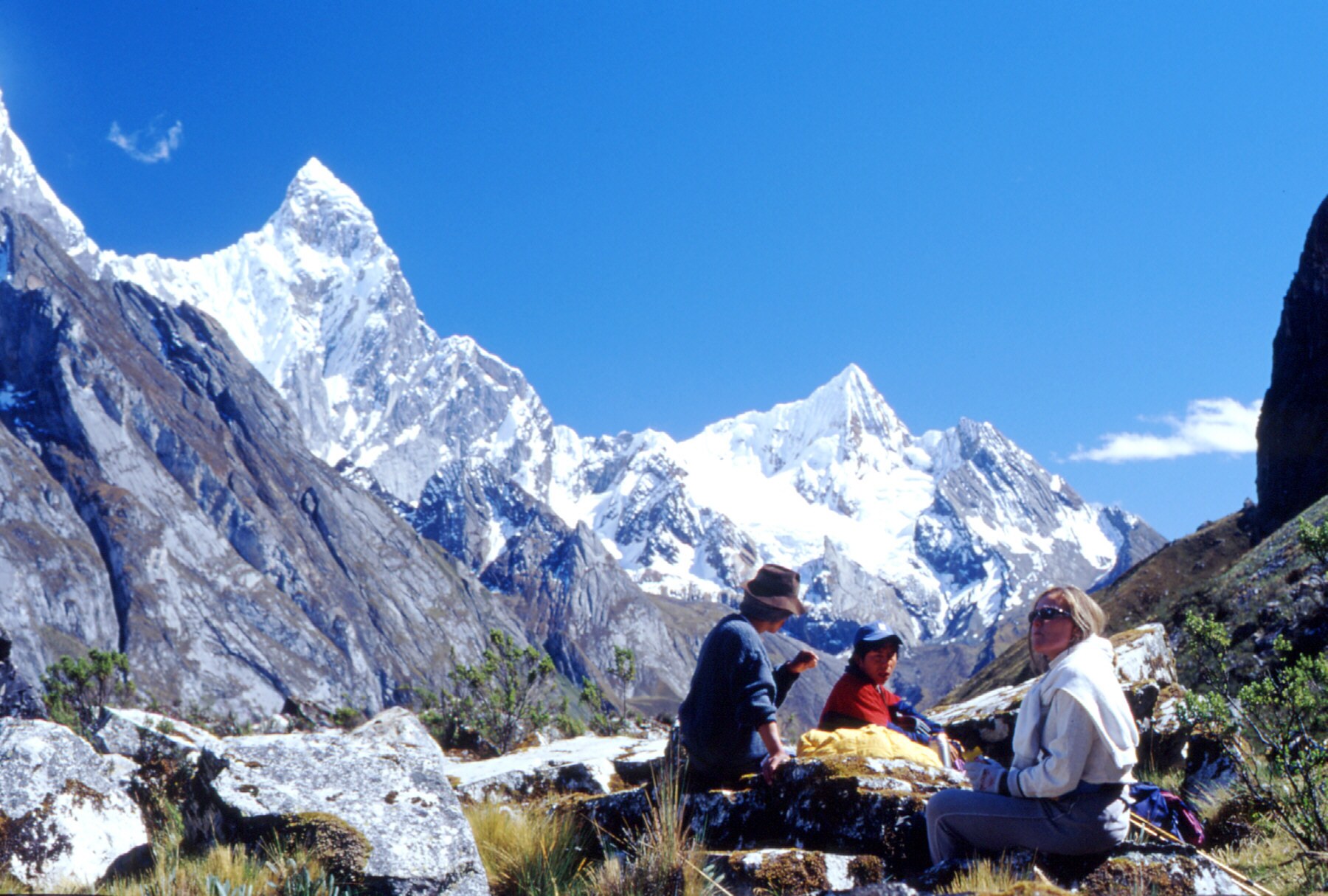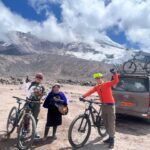
Alpamayo & Los Cedros Trek
The Alpamayo trek, or Los Cedros, is one of the most spectacular walking routes in the Andes of Peru’s Cordillera Blanca.
This tough hike takes you through the heart of the stunning Cordillera Blanca mountain range.
Alpamayo is one of the most attractive peaks in the whole Andean chain, its striking triangular, snow-clad summit piercing the sky.
This Alpamayo treks also provides endless panoramic views of more snow-capped mountains from wonderful high passes.
You also gain an insight into the traditional highland way of life as you pass through small, isolated farming communities in remote and beautiful valleys.
More on Alpamayo trek, Los Cedros
We follow the valley of Los Cedros, which also lends its name to the hike, starting from the small town of Hualcayan.
Each of the 10 days of the walk is characterised by a unique and spectacular sight, be it a dazzling Andean lake, he view of Alpamayo or a rural farm set deep in the valley below gigantic glaciated peaks.
We trek past small communities where we can see the locals out ploughing or planting in the potato fields, herding small flocks of sheep or picking beans.
The trek includes some side trips and a rest day option, so everyone has a chance to enjoy the walking and some additional time to recover and just savour being in such a beautiful place.
Alpamayo is one of many stunning treks in the Andes of Peru.
Trip Highlights
Print Share Download as PDF-
Enjoy one of Cordillera Blanca's more remote and beautiful treks.
-
Hike through isolated Andean villages, and glimpse the highlands' traditional way of life.
-
Fully supported trek with a qualified, bilingual guide to ensure you enjoy this trek to the max.
-
Escape to the inspirational high Andes for a hike of a lifetime.
It was an amazing trip.
We all thoroughly enjoyed it and were so impressed with Peru, the people we met and the variety of experiences. Not only did it live up to my expectations, it surpassed them.
M. Walsh, trekking in Peru
Full Itinerary
Day 1: Arrive Lima, transfer in, hotel
We organise a pick-up at the Lima Airport.
You will be met and taken to a hotel in Lima.
Day 2: Transfer to station, bus to Huaraz, arrival transfer to hotel (B)
We leave Lima early by public bus for a fascinating journey of contrasts that will end amid the towering high Andes at the small highland city of Huaraz. We head north through the coastal desert as far as Pativilca, then turn inland and begin our climb northeastward into the Andes.
We follow the Fortaleza valley, the fertile cultivated river banks contrasting dramatically with the barren mountain sides. Cacti gradually give way to denser vegetation and then puna grassland as we ascend to the highest point on our journey, Conococha (4,050m/13,287ft).
We turn north into the Callejon de Huaylas and enter a different world, the huge snowpeaks of the Cordillera Blanca dominating the landscape.
We arrive in Huaraz (3,090m/10,138ft) late afternoon and check into our hotel.
Day 3: Trek briefing. Visit nearby ruins, hotel (B)
Trek briefing this morning to go over the itinerary.
Later there is time for a walk to see nearby ruins and wander around Huaraz, depending on how you are adapting to the high altitude.
Day 4: Acclimatisation trek to Laguna Churup (4,600m), hotel (B)
Today we start out acclimatisation by heading up to 4,500m/14,764ft and to the beautiful Laguna Churup. We listen to our bodies and see how well we are acclimatising, taking it very slowly in the thin mountain air.
Mount Churup’s reflection in the clear waters of Laguna Churup is the reward for today’s efforts, and well worth it as the peak provides a stunning backdrop to the laguna.
We return to Huaraz and our hotel, maintaining the mountaineering rule of acclimatisation – walk high, sleep low.
Day 5: Drive to Hualcayan, trek 4-5 hours, camp (B,L,D)
Today we drive to the start of the trek. The views are fabulous as we travel along the agricultural valley of Callejón de Huaylas.
We’ll see some of the Cordillera Blanca’s highest, most impressive peaks. Copa (6,188m/20,303ft), Hualcán (6,122m/20,086ft), Huascarán (6,768m/22,206ft), the three jagged peaks of Huandoy (the highest is 6,359m/20,864ft) and Santa Cruz (6,259m/20,536ft).
After 3 or 4 hours we arrive at Hualcayán (3,000m/9,843ft) where our team load up the donkeys with all the kit and food for the trek.
We start walking – the path leading upwards, zig-zagging steeply and offering superb views back over the Callejón. As we climb we can look down into the deep gorge of Quebrada de Los Cedros which falls away to the west. Gnarled, red barked quenual forests line the valley sides, deep blue lakes lie below.
We set up camp for the first night at Huishca (4000m/13,100ft), amid amazing mountain scenery.
Day 6: Trek for 5-6 hours to highest camp of trek (4,500m), camp (B,L,D)
Today we continue upwards towards our first pass.
We pass Laguna Cullicocha (dammed for hydro-electric power), passing beneath the three sharp and spectacular peaks of Santa Cruz. The long eared rabbit-like viscacha leap around amongst the boulders as we scare them from their sun bathing.
Our first pass, (Paso de Los Cedros) is high, at 4,850m/15,910ft, in fact it is the highest on the trek.
We make a welcome descent to our second camp at Osoruri 4,500m/15,100ft.
Day 7: Trek for 5-7 hours to Jancarurish, camp (B,L,D)
Today we start to climb again, but only a short distance, to the second pass, the Osoruri Pass at 4,750m/15,580ft, which is followed by a long descent into the Quebrada de Los Cedros Valley that lies below.
We pass through some small traditional farming communities. Usually there are just a few adobe houses scattered across the valley floor. The people have a few potato fields often perched high up on the valley sides, some small fields of beans and usually small flocks of sheep and goats.
Young kids often look after the animals, shepherding them from one grazing area to another, they turn and stare and giggle at passing strangers.
We have a lovely gentle walk up the valley, and can really get some insight into how the people live out here in these remtoe Andean valleys. The path follows the banks of the river, with beautiful waterfalls falling into the river from the big peaks all around. Milluacocha is to the west and there is a superb panorama of snow-capped mountains appearing ahead.
Tonihgt we camp at Jancarurish camp (4,200m/13,780ft at the base of Alpamayo (5,947m/19,512ft.
Alpamayo is a beautiful and distinct peak – with two sharp summits separated by a corniced razor ridge. It is a unique shape, and though smaller than the peaks that neighbour it, it stands out for its form and beauty.
Day 8: Rest day or optional side walks, camp (B,L,D)
Today is an opportunity to read, laze in the sunshine or take a wander up the valley to spot flowers and birds.
Rest day.
Day 9: Trek 5-7 hours over two passes to our camp (B,L,D)
Back on the trail today we start with a tough climb up to Jancarurish pass (4,830m/15,847ft).
As we climb – take a moment to look back at the views over rocky morraines and stunning blue and green glacial lakes to the outstanding peaks and glaciers of Alpamayo, Jancarurish (5,578m/18,301ft), Quitaraju (6,036m/19,804ft), Pumapampa (5,785m/18,980ft) and Santa Cruz.
We change direction at the top of the pass and head northeast, the gigantic peak of Pucajirca (6,050m/19,850ft) now in view in the distance.
After the pass the path wanders downwards gradually through rolling mountain landscapes, much like the Scottish highlands. There are views eastwards to the farming valleys of the Callejón de Conchucos. beyond the valleys lie the lowlands of the Amazon Basin.
We have one more small climb today 400m/1,312ft or so taking us into Quebrada Tayapampa and the community of Huillca (4000m/13,124ft), camp.
Day 10: Trek over 4,600m pass to lake Sactaycocha, camp at Pucajirca (B,L,D)
Today we set off on a steady climb through the puna grasslands to reach the next pass at 4,600m/15,100ft.
The peak of Pucajirca looms above the pass. The view ahead is beautiful, a small lake, Laguna Sactaycocha,and patch of quenual woodland. This ancient Andean quenual forest is the habitat of the Andean spectacled bear and and of several sorts of Andean deer.
The trail continues, downwards now, we walk through the forest, to the flat valley of Jancapampa (3,500m/11,483 ft).
Large peaks tower over us, Taulliraju (5,830m/19,128ft) and Rinrijirca (5,810m/19,060ft).
We camp nearby with glaciers, waterfalls, giant peaks, and farming hamlets spread out on the slopes below. What a stunning spot.
Day 11: Trek over Tupatupa pass, descent to Quisuar camp (B,L,D)
Today we have a gentle ascent to get to the next pass, Tupatupa.
Now we have views towards the north, with a panorama of the northern snow-topped Cordillera Blanca mountains.
We descend to our camp tonight near the village of Quisuar.
Day 12: Over Alto de Pucaraju pass and down into Huaripampa valley, camp (B,L,D)
The pass today is called Alto de Pucaraju.
We clmb over the pass and down the far side into the fertile Huaripampa valley. We camp here.
Day 13: Trek Punta Union pass, 4,750m, descend to Taullipampa camp (B,L,D)
Our last pass today.
We set off up and over the Punta Union pass at 4,750m/15,584ft.
Our final night is spent camping at Taullipampa.
This is the final night of the trek so we may have a celebratory glass of wine or beer.
Day 14: Trek out to Cashapampa, transfer to Huaraz, hotel, celebration dinner (B,L,D)
Today we continue the descent of the Santa Cruz valley to the town of Cashapampa.
Our vehicle will be here to take you back to Huaraz for a hot shower, a good meal, and a well-deserved night in a hotel bed.
Day 15: Transfer to station, bus to Lima, tour ends (B)
The tour ends today with a bus journey back to Lima.
Prices From $2,945 / £2,394 per person
What's Included?
Transport from your arrival at the aiport to departure, bus tickets Lima to/from Huaraz, Hotels in Lima and Huaraz, Professional, English speaking guide for all trekking, outdoor cook, all meals and snacks on trek, breakfasts in town. Park entrance fee, camping & cooking equipment. Donkeys transport luggage. We include tents, sleeping mats (foam), cook tent, dining tent, tables, stolls and toilet tent (where applicable), First aid kit
What's Not Included?
International flights (we are happy to quote), other meals, snacks and drinks, any equipment hire, personal expenses, tips, laundry and sleeping bag.
Accommodation
We use clean, central 2-3* hotels in towns, all with private bathrooms.
Camping we use top quality two-man tents on all treks.
Tour Staff
You will be met in Lima by one of our representatives, and they will escort you to your hotel. Here, you will find any vouchers you may need for buses etc.
The same in Huaraz – you are met on arrival and our reps will have any vouchers you may need, and can answer any questions you may have about the trek.
On the trek, all equipment is transported for us and meals are prepared by our local cook.
All guides are certified, bilingual, English-speaking guides who have worked with us for many years.
Cooks, mule drivers and additional staff are all from the local, nearby communities and we have worked with them for a long time.
Meals
Vegetarians and many other dietary requirements are catered for without problems. Please let us know in advance of any requirements you have.
You wake early, usually around 07.00. Breakfast is served in a dining tent, and consists of hot drinks, porridge, toast, jams and bread, and your guide will explain the day’s trekking plans.
Lunch is usually around 13.00 and can feature soups, meats, salads and fish, with vegetarian options and hot drinks too.
The campsites are comfortable and around 17.00 hot drinks, popcorn and other snacks are served to help you recover energy.
Dinner is served around 19.30, and will feature pasta, mashed potatoes, meat, fish or vegetarian options, followed by hot drinks and a pudding.
Huaraz has a wide variety of Peruvian and international restaurants to suit most tastes and budgets.
Activity Level
We have classified this as a moderate to strenuous trek, and you need to be in good physical shape for it.
You have two acclimatisation hikes, then walk 4-7 hours a day for 10 consecutive days (with one rest day), over rugged mountain trails at elevation.
There is a high altitude pass to cross at 4,850m/15,910ft and we walk and sleep at high altitude for long periods of this tour.
Pre-trip preparation should include challenging cardiovascular exercise (including regular hikes on varied terrain) and a healthy, balanced diet.
Well-worn hiking boots are highly recommended.
All guests are encouraged to hike at their own pace, taking breaks whenever needed, to ensure a successful and enjoyable trek for all.
Most people go to bed fairly early after a long day trekking, to recover energy for the morning.
Practical Information
Introduction to Peru
Peru is the perfect holiday destination for adventure travellers that want an amazing variety of activity, geography and cultural travel experiences.
The breadth of travel experiences in Peru is breathtaking – from trekking in the Andes to Machu Picchu to the tropical jungle of the Amazon, and plenty in between.
The people of Peru make it a special destination too, with its colourful and traditional street life and friendly locals.
Kit list
Good kit is vital for every trip.
Book with Andean Trails and get 15% off Páramo’s fantastic ethical and high performance outdoor gear.
Overview
When planning for the varied climatic conditions encountered, layering is the most practical and versatile clothing system. It’s worth remembering that our clothing keeps us warm by retaining and isolating the heat we ourselves create.
To best maintain body heat, several layers of lightweight, warm and quick-drying clothing are far more efficient than one or two thick layers. Layers should have the following qualities:
- Breathability (able to wick away the humidity produced by sweat):
- Isolation (able to keep in the warm air our body produces); and
- Impermeability (able to impede the passing of wind and water).
First (base) layer: This layer wicks the sweat away from our skin, thus helping keep the body dry and warm. To this end, synthetic fabrics such as polypropylene should be used.
Mid layers: These isolating layers should also be synthetic (e.g. the known polar linings such as polartec or windblock, which are light and insulate twice as well as wool). Very important layers for retaining body heat.
Outer layer / shell: Finally, the vital layer which protects us from climatic adversities. A breathable, wind-proof and waterproof anorak, such as Goretex.
Give plenty of thought to kit selection, and try to keep weight down.
We also carry an extensive first aid kit & oxygen on all trips, but these are generally for emergencies only.
Below is a more detailed kit list.
Detailed kit list
- 2 pairs synthetic inner socks (e.g. polypropylene, thermastat, coolmax) and 2 pairs thick loop-stitch/wool socks for cold.
- Trekking boots – should be well broken-in, waterproof and provide good ankle support.
- Trainers/sandals for city-wear, evenings at lower camps & river crossings.
- Base layer leggings (1 pair).
- Thick fleece leggings (or salopettes) (1 pair).
- Goretex-type over-trousers (or salopettes) (1 pair).
- Trekking trousers (2 pairs).
- Shorts – wear sparingly in early stages at altitude, as sun burns.
- Thermal base layer shirts (2).
- Microfleece mid-layer shirt (1).
- Shirt/t-shirt 1 or 2 for lower altitudes. Long-sleeved, collared shirt protects against sun
- Fleece jacket or similar (1).
- Warm jacket (down or synthetic). For camp and upper slopes.
- Waterproof Goretex-type jacket.
- Broad-brimmed sunhat, essential.
- Warm hat, fleece or wool. (N.B. Up to 30% of body heat can be lost through the head).
- Sunglasses with UV filter.
- Scarf for cold.
- Bandanna – to protect neck from strong sun.
- Light inner gloves
- Warm gloves, e.g. fleece, and outer waterproof gloves or mittens (1 pair)
- Mittens allow you to keep the fingers together, and better conserve heat (though they also make it difficult to perform certain tasks).
- Daypack (at least 30 litres). Comfortable and with waterproof lining or cover.
- Large rucksack or suitcase.
- Pair of telescopic trekking poles (can be rented).
- Duffel bag or large rucksack for extra clothing, carried by horse/mule/porter while you are trekking.
- Sleeping bag (3-4 season, can be rented).
- Water bottle (2 litres approx.) & purification tablets.
- Personal first-aid kit to include: painkillers, plasters (band-aids), moleskin, anti-biotic cream, general antibiotics (ask your GP), after-bite (tiger balm), anti-diarrhoea tablets, throat lozenges, re-hydration salts & personal medication.
- Insect repellent.
- Towel & wash-kit.
- Wet Wipes/antiseptic hand-wash cream.
- Toilet paper (1)
- Sunscreen (factor 30+) and lip salve.
- Head-lamp (plus spare bulb and batteries).
- Penknife.
- Travel alarm clock.
- Plastic bags – ‘Zip-loc’ & tough bin liners.
- Camera and film / memory cards (take at least twice the amount you think you will need!). Print & slide film is available locally. Polarising filter is recommended for SLR cameras.
- Book, e-book, mp3 player/ipod or other for free time.
- Binoculars.
- Spanish/English phrasebook.
- Extra snacks i.e. cereal bars or favourite chocolate bars.
All other non-personal trekking camping gear e.g. tents, cutlery etc is provided.
Miscellaneous others
- Money belt.
- Passport.
- U.S. dollars cash, mixed-denomination notes, undamaged and unmarked.
- ATM cash/credit card.
- Any inoculation certificates.
- Personal & medical insurance certificates.
- Presents e.g. Postcards from home.
- Comfortable clothes for travel, smart clothes for night life.
Altitude
Being at altitude, especially in the tropics, is usually a pleasure as it isn’t so hot, there are few insects and the air is clear.
However, when gaining altitude, air pressure drops and the amount of oxygen reaching the lungs is reduced. Although we build plenty of acclimatisation time into our itineraries, certain ill-effects are possible. Nevertheless, all of these can be minimised or prevented if care is taken.
On reaching heights above 2,500m (approx. 8,200 ft), especially when ascent has been straight from sea level, heart pounding, mild headache and shortness of breath are normal, especially on exertion.
Acute mountain sickness (AMS) is a syndrome known locally as soroche, whose symptoms can include of bad headache, dizziness and nausea).
To avoid AMS, you should:
- Rest for a few hours on arrival at altitude and take it easy for the first couple of days. Note: you may feel fine on arrival and tempted to exert yourself as normal. Don’t be fooled: you might be benefiting from oxygen brought in your blood from sea level.
- Drink plenty of water to avoid dehydration (altitude is a diuretic). Coca tea (mate de coca) helps alleviate symptoms.
- Eat light meals, with high carbohydrate and low fat and protein content. Dine early, allowing digestion time pre-sleep.
- Avoid over-exposure to the strong highland sun (UV rays are very powerful) – especially in the early stages – making sure you wear a broad brimmed sunhat. Apply lip-salve to prevent chapped lips.
- Avoid or minimise consumption of cigarettes and alcohol. Avoid sleeping pills.
- If you do get AMS: Rest, take non-aspirin painkillers (for headache) and coca tea. Symptoms should subside after a day or two.
- Pregnant women, people with a history of heart, lung, kidney or blood disease or blood pressure problems, should consult their doctor before traveling to high altitude.
ATOL holiday protection
Andean Trails has 25 years of experience of putting together the best South America holidays.
We pay a fee to the CAA for every licensable passenger we book since we hold an Air Travel Organiser’s Licence granted by the Civil Aviation Authority. In the unlikely event of our insolvency, the CAA will ensure that you are not stranded abroad and will arrange to refund any money you have paid to us for an advance booking.
We also offer ATOL (Civil Aviation Authority) protected holidays to give our customers peace of mind when booking and travelling.
When you buy an ATOL protected air holiday package from Andean Trails Ltd you will receive a Confirmation Invoice from us confirming your arrangements and your protection under our Air Travel Organiser’s Licence number 6275.
You can read more about ATOL, who is covered and what protections you have if not ATOL-covered, on our ATOL page.
What is ATOL?
The CAA’s ATOL scheme offers protection to your money and your holiday if you book with us. Not everybody is covered (see ‘Who is covered?’ for more), as you must purchase an ‘air package holiday’ with Andean Trails to be protected.
And ‘air package holiday’ is defined as including a flight and some ground services (hotel, transfer, trek etc). This is also known as an ‘ATOL-protected holiday’.
Who is covered?
To be covered by ATOL, you must book a flight and some ground services with us and be from the UK. If you are from the UK and only book ground services and no flights, you are not covered by ATOL (see below for more on how non-ATOL clients are covered).
If you are outside the UK and buy flights with us, you will be ATOL protected IF any of the flights booked with Andean Trails touches/stops in the UK at any point during your holiday package booked with us.
If you buy your flights elsewhere, please check with that agent if you are ATOL protected. Be careful with online flight purchases and make sure you know what protection you have, if any, before paying for flights.
Not all holiday or travel services offered and sold by us will be protected by the ATOL scheme. Please ask us to confirm what protection may apply to your booking.
For land only holidays not involving any air travel, in accordance with “The Package Travel, Package Holidays and Package Tours Regulations 1992”, all UK passengers booking with Andean Trails Ltd. are fully protected for the initial deposit and subsequently the balance of all money paid to us, arising from cancellation or curtailment of travel arrangements due to the insolvency of Andean Trails.
I’m not ATOL covered, what protection do I have?
If you are not ATOL covered, any payments you make to us go to a Trust account.
We can only access this money once your tour has been completed, meaning that if anything happens to Andean Trails Limited while you are on holiday, then your money is secure and you can either complete the trip or be able to make it home.
If you pay for your holiday with a credit card, some offer payment protection – please check with your cardholder.
You also should have cancellation protection written into your insurance (which we recommend you have at the time of booking) in case you need to cancel.
Prices From $2,945 / £2,394 per person
The trek can be organised any time from March to October.
Guide price USD2,945
Please ask for dates and prices for different group sizes.
Sometimes we have departures already guaranteed open to others.


Dates & Prices
Prices From $2,945 / £2,394 per person
The trek can be organised any time from March to October.
Guide price USD2,945
Please ask for dates and prices for different group sizes.
Sometimes we have departures already guaranteed open to others.
Can’t find what you’re looking for? Get in Touch
+44 (0)131 378 5593
+44 (0)131 554 6025



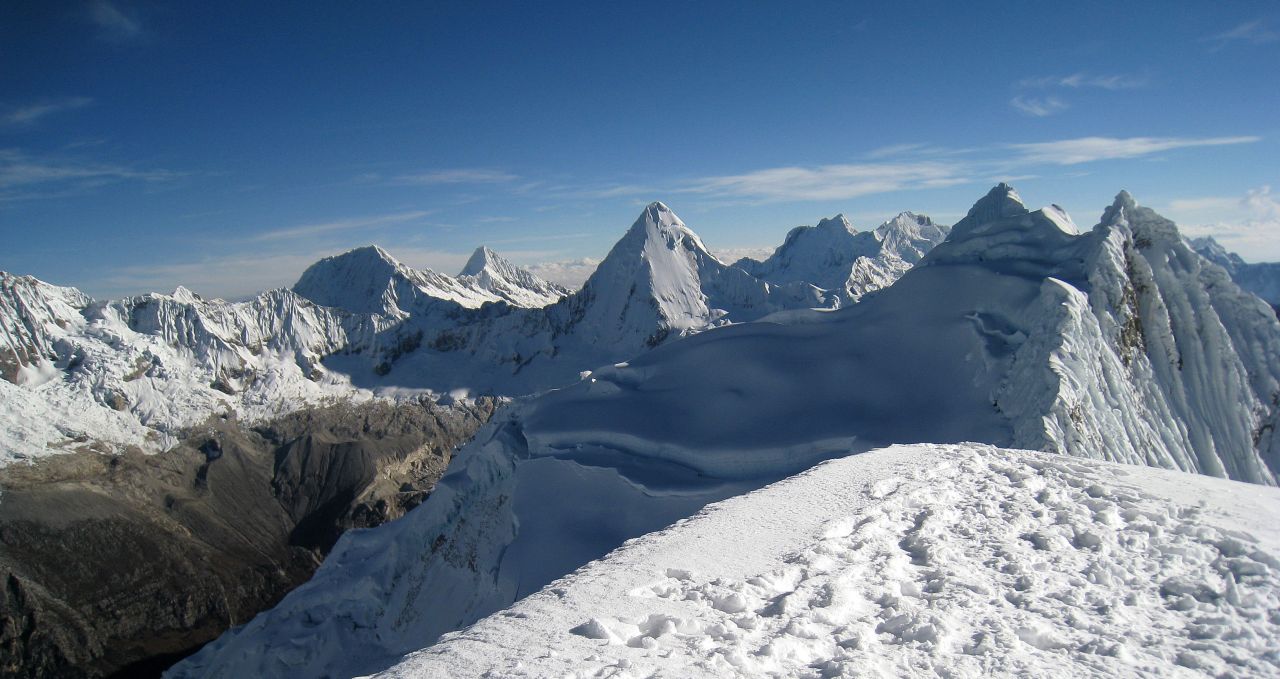
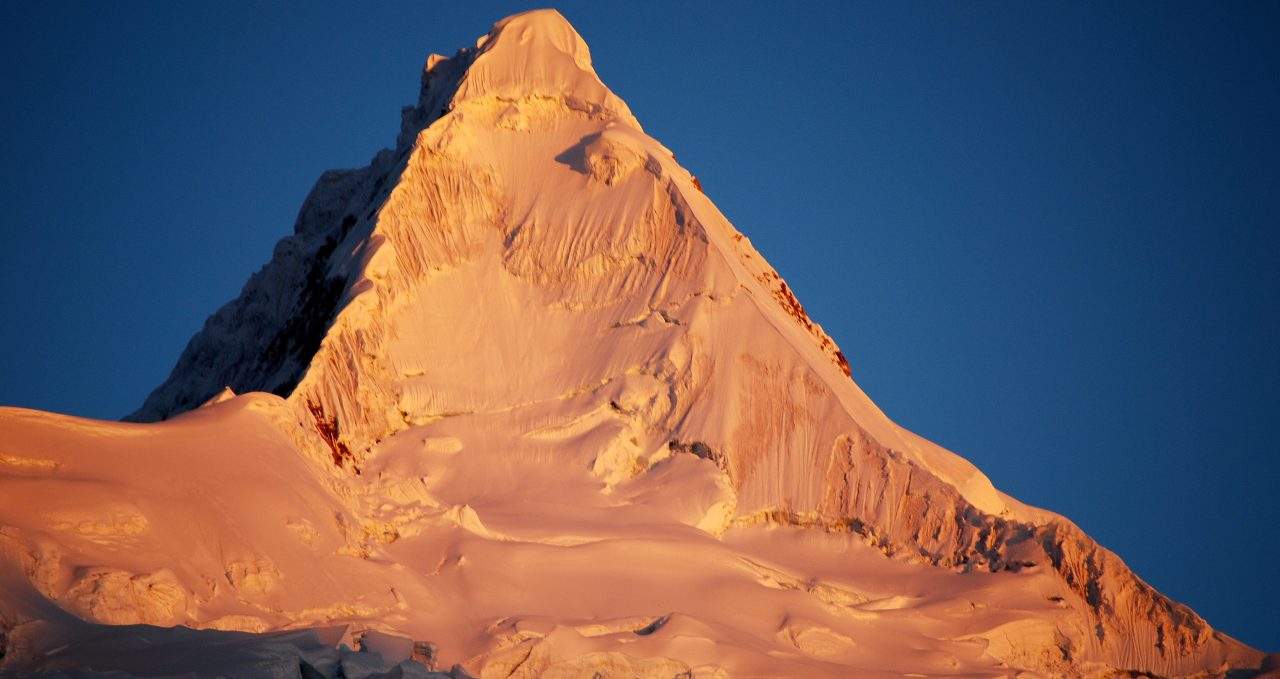
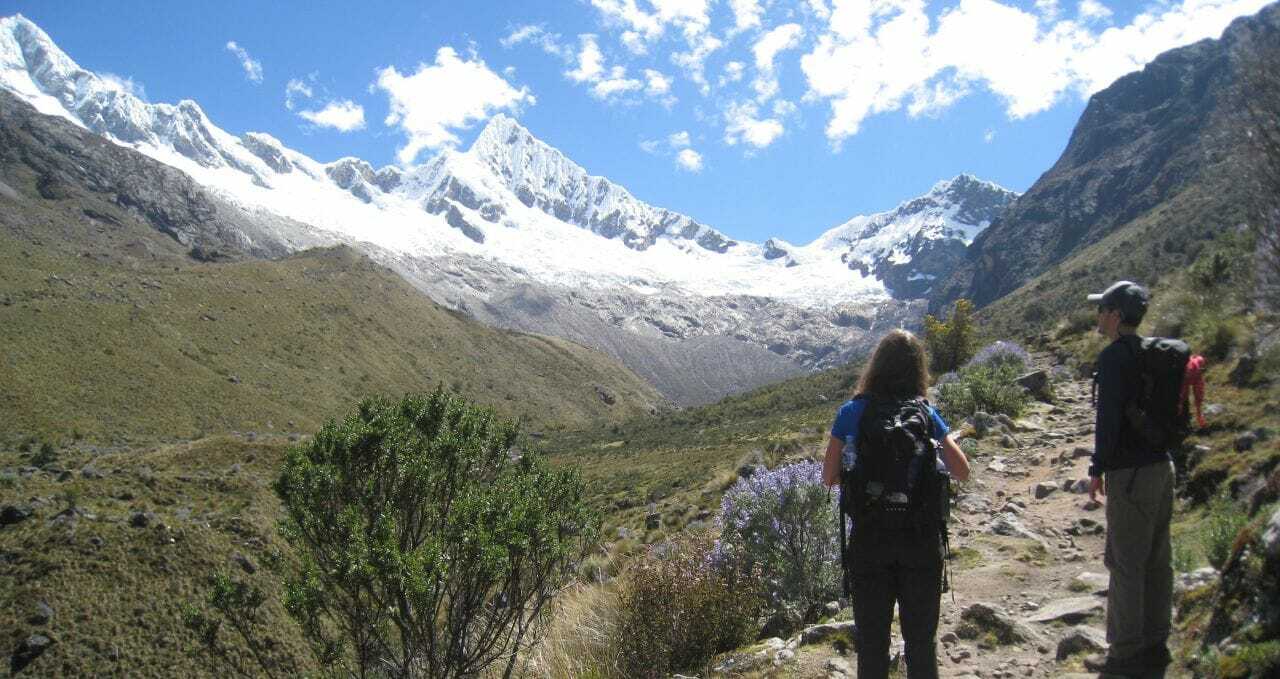
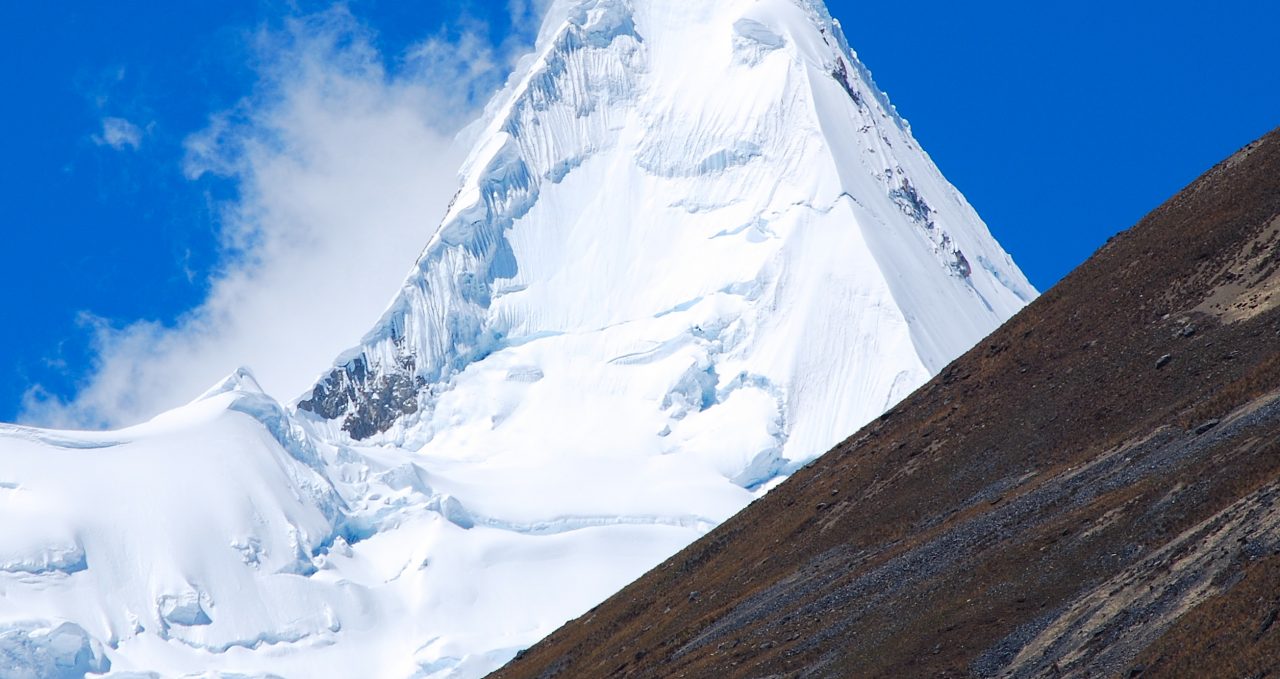
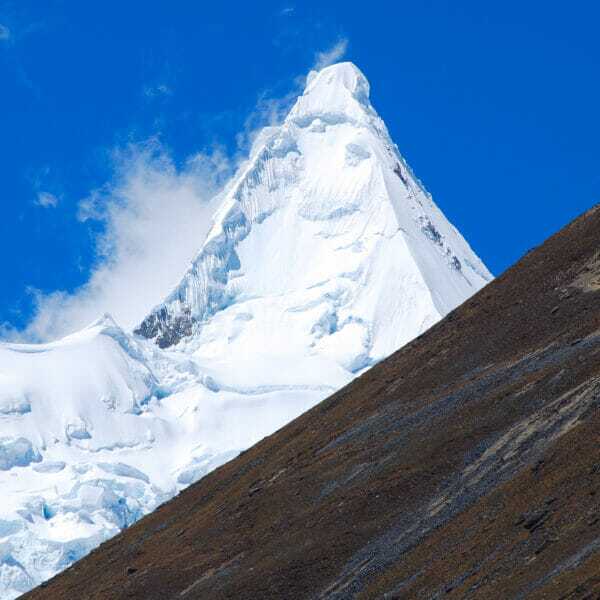
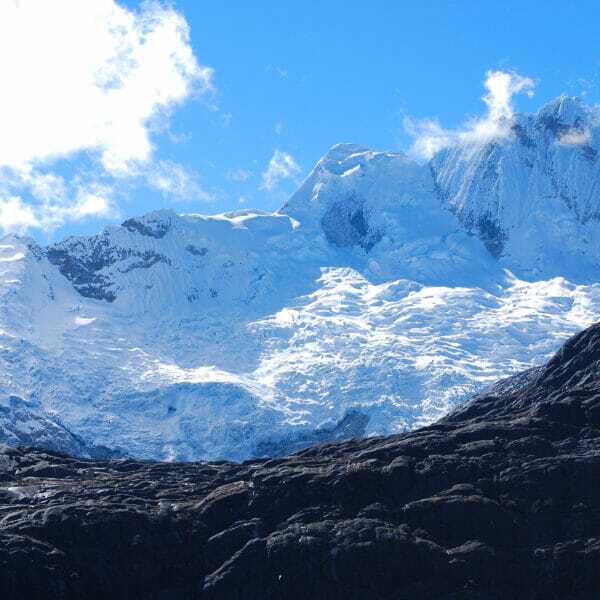
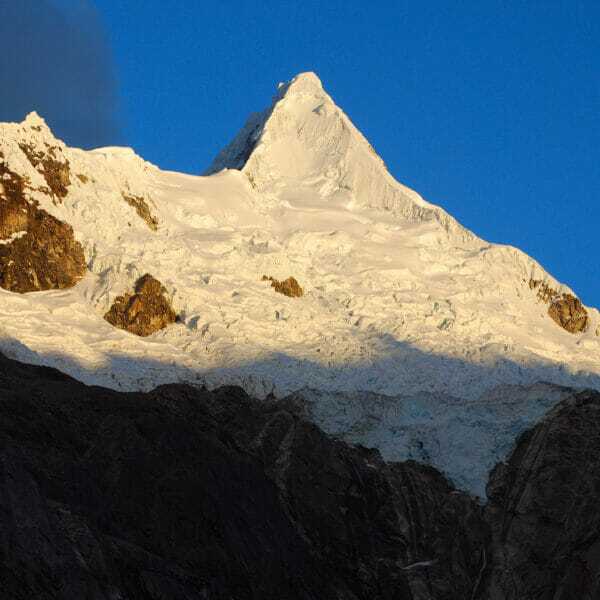
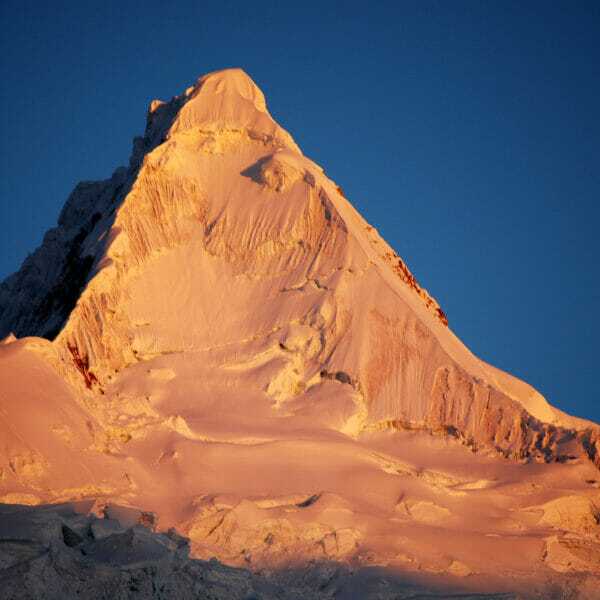
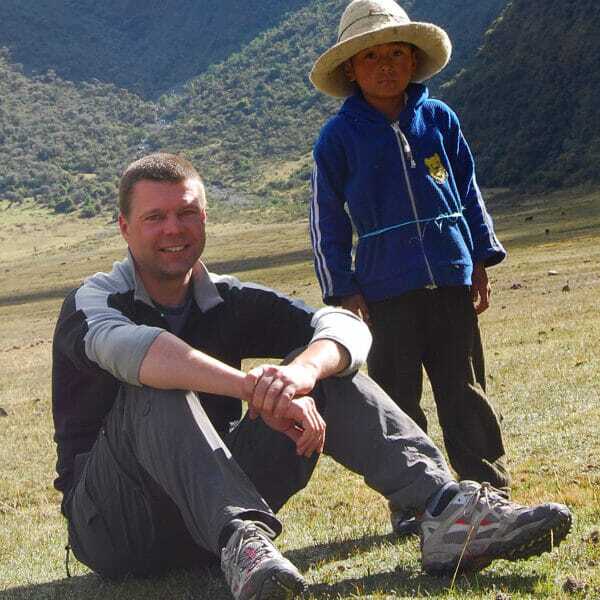
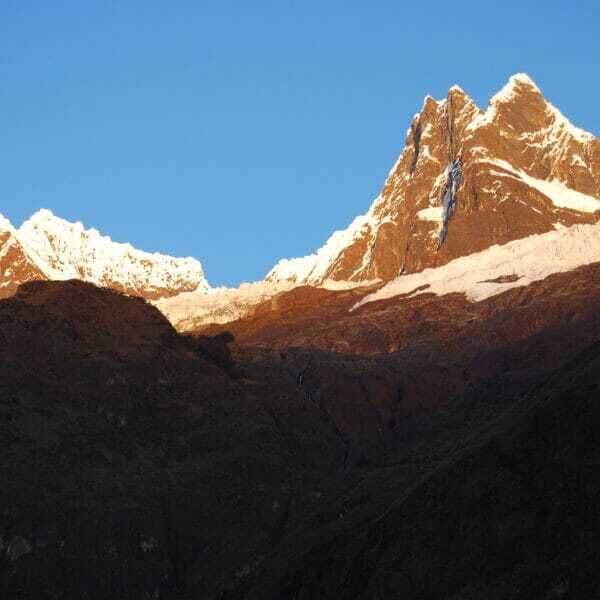
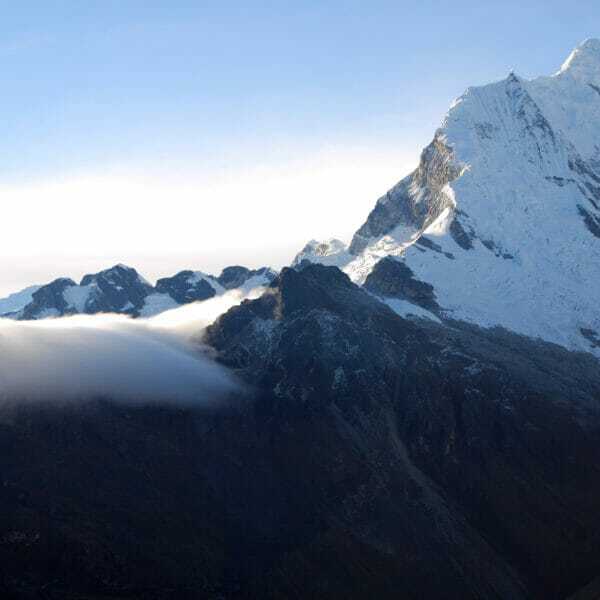
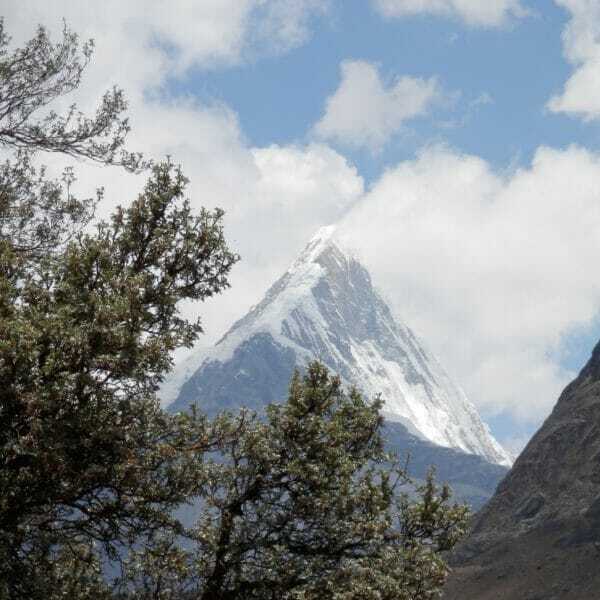
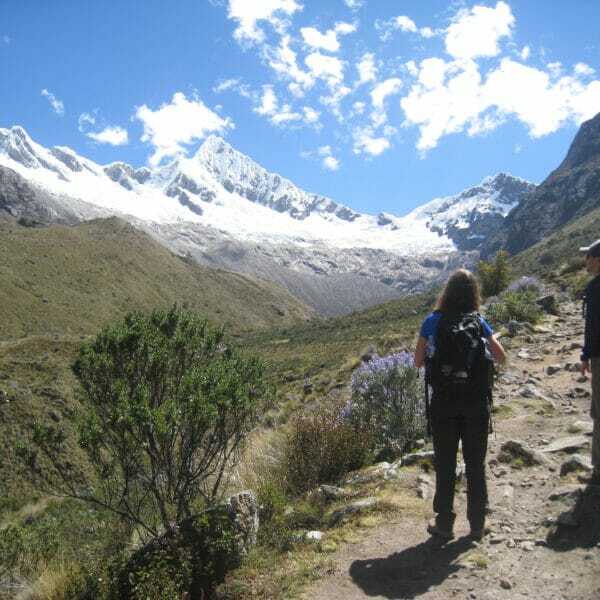
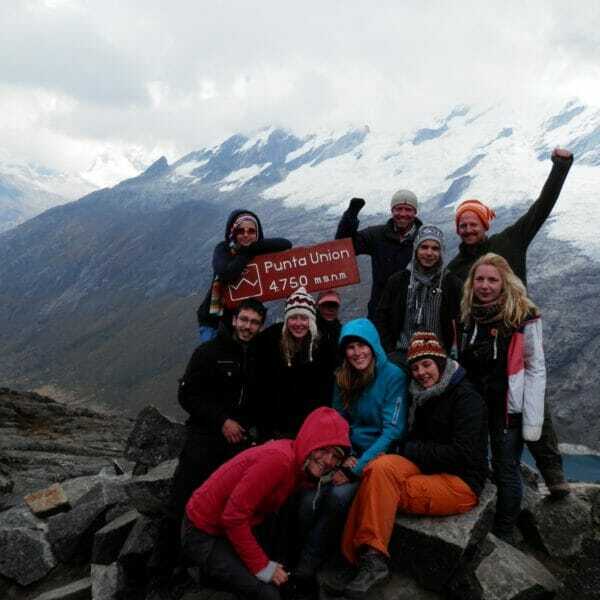
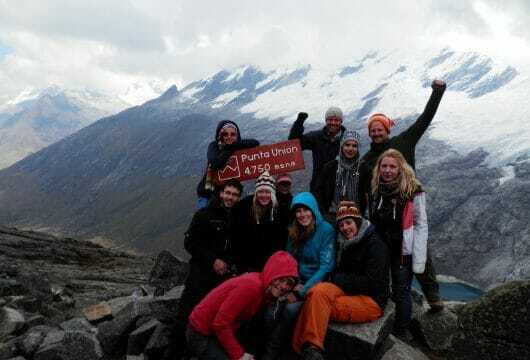
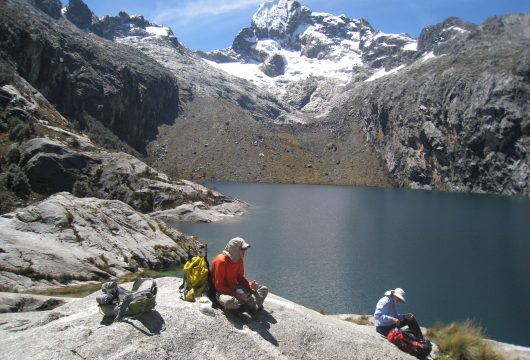
 a Tailor Made Tour
a Tailor Made Tour 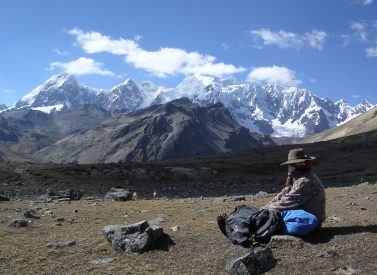
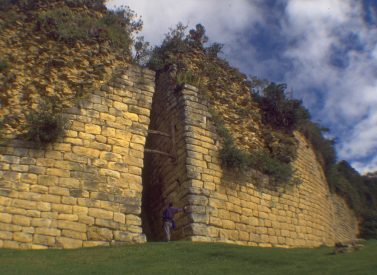
 a Group Tour
a Group Tour 